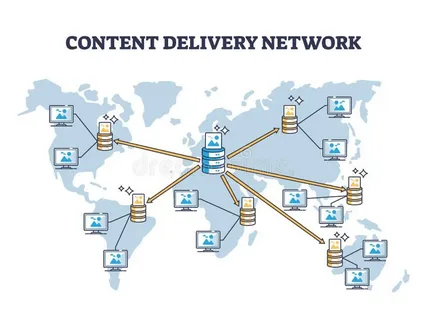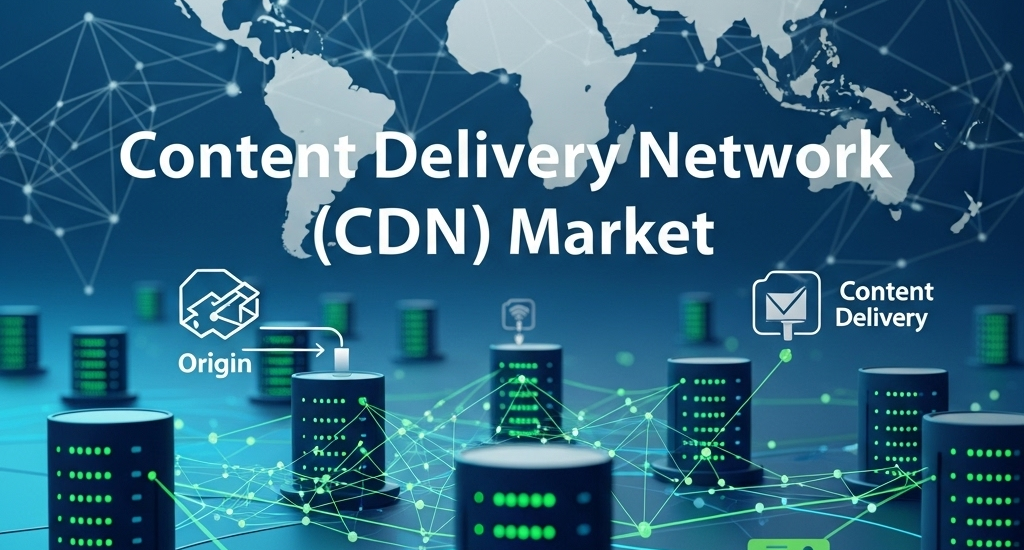The global content delivery network (CDN) market is worth USD 14.08 billion in 2025 and is slated to reach USD 60 billion by 2035, which shows a robust CAGR of 15.6% over the forecast period. This growth is being driven by the exponential rise in data consumption, video streaming, gaming, and real-time content delivery across mobile and desktop platforms.
In the age of instant gratification, where users expect websites to load in milliseconds and videos to stream without buffering, the true enablers of this seamless experience often go unnoticed. Content Delivery Networks (CDNs) are the invisible infrastructure working behind the scenes to make the internet faster, safer, and more scalable.
From e-commerce to social media, gaming to financial services, CDNs are the silent engines that deliver content reliably across the globe. As digital interactions grow more complex and latency more intolerable, the importance of CDNs is only intensifying—quietly underpinning the speed and scale of the modern web.
Get Ahead with Our Report: Request Your Sample Now!
https://www.futuremarketinsights.com/reports/sample/rep-gb-1286
Beyond Speed: Delivering Performance, Security, and Scale
CDNs do more than just accelerate websites. These distributed networks of servers strategically placed around the world help reduce load times, minimize server strain, and deliver content with exceptional consistency. Whether it’s streaming a movie, loading a mobile app, or serving real-time game data, CDNs ensure the end-user experience is optimized.
But their capabilities now go far beyond delivery. Modern CDNs offer security against DDoS attacks, manage API traffic, provide web application firewalls, and support real-time data exchange. They are not just about making things faster—they are about making them safer, more scalable, and more intelligent.
Overshadowed by Interfaces, Anchored by Infrastructure
While front-end design, app features, and user interfaces often take center stage, none of it functions smoothly without robust back-end infrastructure. CDNs are rarely visible to users, yet they make the difference between a sluggish digital experience and a responsive one.
As enterprises push toward global reach, multilingual content, and high-resolution media, the demand for low-latency delivery and fail-safe performance makes CDNs essential. They are the infrastructure layer that ensures content can move freely, securely, and efficiently—regardless of scale or geography.

Real-Time Responsiveness in a Distributed World
Today’s digital economy is built on real-time interactions. From live sports streaming to stock market apps and virtual meetings, the margin for delay has all but disappeared. CDNs bring content closer to the user—geographically and logically—by caching it at edge nodes worldwide.
Edge computing capabilities within CDNs now enable localized processing, reducing the need for data to travel to distant central servers. This decentralization improves speed, reduces congestion, and ensures greater reliability, especially during demand spikes or network interruptions.
A New Layer of Intelligence and Integration
Modern CDNs are evolving into intelligent platforms that integrate deeply with digital ecosystems. Through AI-driven analytics, traffic shaping, and smart routing, they adapt in real time to deliver optimal performance based on location, device, or user behavior.
Developers and enterprises benefit from flexible APIs, modular services, and customizable policies—making it easier to build secure, scalable digital experiences. From static content to dynamic APIs and interactive media, CDNs are becoming the go-to layer for performance engineering and digital acceleration.
Thorough Market Evaluation: Full Report
https://www.futuremarketinsights.com/reports/content-delivery-network-market
Tied to UX, Revenue, and Reputation
In digital business, speed is more than a convenience—it’s a competitive advantage. Research consistently shows that slow load times lead to user drop-off, lower engagement, and reduced conversion rates. CDNs directly impact revenue by enhancing user experience and ensuring consistent availability.
They also safeguard brand reputation by protecting against downtime, data breaches, and performance failures. In high-stakes sectors like finance, healthcare, and media, a few seconds of latency or a momentary outage can result in massive consequences. CDNs reduce those risks by delivering stability at scale.
The Invisible Force Behind Digital Reliability
While users rarely know what a CDN is or how it works, they feel its impact every time a page loads quickly or a video streams flawlessly. CDNs have become a critical part of how the internet operates—enhancing delivery, defending against threats, and enabling innovation.
Ignore their role, and digital performance becomes brittle and unpredictable. Embrace them, and content becomes a competitive asset—moving faster, reaching farther, and operating with greater intelligence.
As digital transformation continues to push businesses online and users to the edge, content delivery networks remain the quiet force ensuring it all just works—flawlessly, securely, and globally.






